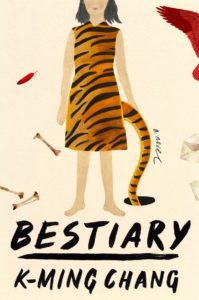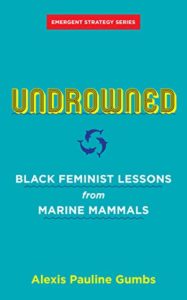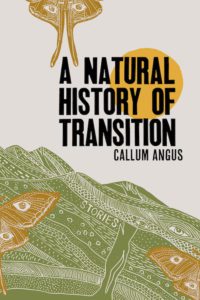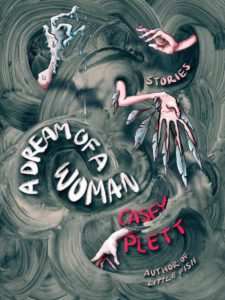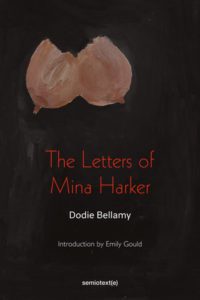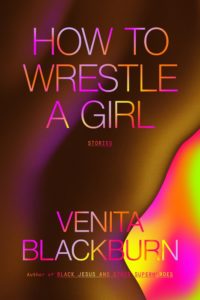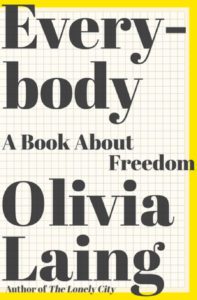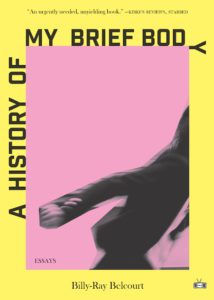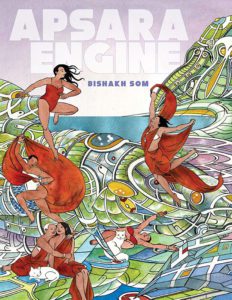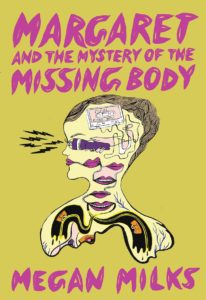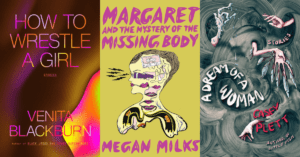
I’ve been writing about bodies for such a long time, I recently declared to some friends that I was sick of the word. As if I could ever stop using it—for one thing, it’s in the title of my book.
There are a number of missing bodies in my novel, Margaret and the Mystery of the Missing Body, out September 14 from Feminist Press; to avoid spoilers, I won’t list them here. But for all the attention to bodies in Margaret, there’s not much detailed description of them. Okay, one section features a thickly described bodyworld. My characters’ bodies, on the other hand, are lightly, nervously drawn.
This is a choice, and also a weakness. While “the body” is a central concern of much of my fiction, I tend to avoid physical description—I convince myself it’s invasive, or objectifying, or reductive, and recuse myself from the task, rationalizing that I’m more interested in voice and genre than in physicality anyway.
But also, it’s just hard, and I’m always looking to other authors to see how they manage to do it. Below are some recent books by writers who offer fresh approaches to thinking and writing about bodies—bodies that piss and shit, that wound and hurt, that change, that breathe, that want.
***
Bestiary by K-Ming Chang
In this speculative history of migration, the narrator grows a tiger’s tail as a result of a tailbone injury and sends and receives letters from pore-like holes she has made in the ground. From its first pages, Bestiary is saturated in piss and spit, blood and shit, all presented with a nonchalance that rejects Western abjection. Adopting a visceral kind of fabulism, Chang’s debut novel is acutely attuned to the body and its expressions, especially the ways in which both are shaped by colonial violence. And I haven’t yet mentioned her work with language, which is consistently stunning and startling.
Undrowned: Black Feminist Lessons from Marine Mammals by Alexis Pauline Gumbs
“If there ever was a time to humbly submit to the mentorship of marine mammals it is now,” declares Gumbs in her new book Undrowned. Why? Because we are living in unbreathable conditions, she writes. Gumbs connects her project to her ancestors who survived the middle passage to become “the undrowned.” She calls upon all of us to practice new ways of breathing, looking to our marine mammal kin who are, after all, “amazing at not drowning.” Moving away from the objectivity and identification goals of available scientific guides, Gumbs pushes for identification with marine mammals—including walruses, river dolphins, Hawaiian monk seals, and many more. The result is a wonderfully original somatic handbook that offers new ways of understanding our bodies in relation to those of our underwater kin.
A Natural History of Transition by Callum Angus
A Natural History of Transition is similarly enraptured with the natural world, and in awe of its transformative magic. Many of the eight stories in Angus’s debut depict transness as operating on both realist and fabulist levels—we see trans characters become stone, become swarm, become chrysalis. “In Kind” imagines a trans man giving birth to a cocoon; “Winter of Men” describes a seventeenth-century congregation of nuns whose bodies transition six months out of the year. By cracking open the standard notion of “transition,” these stories invite us to think more expansively about bodies and their capacity to change.
A Dream of a Woman by Casey Plett
I’ve always admired Plett’s ability to capture the tenderest and most complicated intimacies between characters. Exploring addiction, loss, consent, and shifting desires, each story in her extraordinary new collection is somehow even more tender and emotionally complex than the last. Given her deftness in drawing intimacy, it’s no surprise that her sex scenes are hot, hot, hot. The last, long story, “Enough Trouble,” is a case in point, as two characters revel in each other’s bodies on their way toward falling in love.
The Letters of Mina Harker by Dodie Bellamy
Speaking of sex: The Letters of Mina Harker, originally published in 1998, returns next month in a second edition from Semiotext(e). Like much of Bellamy’s work, Mina explores the relationship between language and desire with bawdy delight. In it, Bram Stoker’s Mina Harker—now reimagined as a sex-positive, independent woman living in 1980s San Francisco—takes over (the writer) Dodie’s body and tells all. Like Dracula, Bellamy’s novel (her first) is an epistolary novel. Yet where Dracula expresses the erotic most explicitly through vampiric acts, Bellamy’s gushing confessional is openly, exuberantly libidinal and loads more fun—using the letter form to capture both Mina/Dodie’s sexual exploits as well as the writerly gossip of the Bay Area at the time.
How to Wrestle a Girl: Stories by Venita Blackburn
The many bodies in Blackburn’s second short story collection include fat-harvesting bodies and wrestling bodies, bruised bodies and zombified bodies—and all kinds of desiring bodies, especially those of queer girls of color who are beginning to sort out what their bodies mean in the social world. In addition to all these bodies, How to Wrestle a Girl is packed full of different forms, including a crossword puzzle, a grief log, and a quiz, as well as lineated and more hybrid pieces—all composed with terrific energy and tremendous style.
Everybody: A Book about Freedom by Olivia Laing
Art and culture critic Laing’s newest book investigates bodily freedom and its curtailments: from illness and pain to the methods we take to relieve them, from gender injustice to sexual liberation, from state-sanctioned violence to the freedom movements that have emerged to resist it. These are vast topics, and Everybody is appropriately big—in scope, reach, and feeling—with an archive of figures as various as the Marquis de Sade and Andrea Dworkin, Susan Sontag and Nina Simone. The book’s focal figure is ex-Freud protégé and eventual fraud Wilhelm Reich, whose fall from grace is memorialized in Kate Bush’s “Cloudbusting.” Engaging closely with Reich’s somatic theories, Laing’s discussion of the body radiates out in all directions.
A History of My Brief Body by Billy-Ray Belcourt
“NDN boys are ideas before they are bodied,” Billy-Ray Belcourt writes. “Our lives are muffled by a flurry of accusations that outrun us.” Belcourt’s first work of nonfiction after two poetry collections, A History of My Brief Body combines theory and poetry to tell the personal history of a body shaped by colonial and state violence, sexual oppression, and community love and care. Advancing in densely exquisite prose, these varied writings disrupt the memoir as a form; the book is as much a meditation on writing as it on love, loss, and embodiment.
Apsara Engine by Bishakh Som
This collection of eight graphic stories is marvelous, sinister, winking, wry, full of swerves and shocks and queer disruptions. Among other things, Som uses the weird/uncanny to slice through and/or expose the creepy banality of contemporary gentrified Brooklyn. All of these stories are committed to proliferating representation of South Asian queer femininity—and Som’s depictions of her characters’ shapely, expressive bodies are drawn with evident care and affection. A gorgeous, stirring, surprising collection.
And to close out this wonderful list, we just had to include Megan’s new novel, Margaret and the Mystery of the Missing Body, out September 14 from Feminist Press! – Ed.
Margaret and the Mystery of the Missing Body by Megan Milks
This queer and trans coming-of-age novel shifts style and mode to “grow up” (or staunchly refuse to) with its protagonist. At age twelve, Margaret was living her best life as the former head detective of the middle school mystery club Girls Can Solve Anything. Now she’s seventeen: the club has disbanded, and Margaret is unmoored—she doesn’t want to grow up, and she wishes her friends wouldn’t either. Instead she opts out, developing an eating disorder that quickly takes over her life. When she lands in a treatment center, Margaret finds her path to recovery twisting sideways as she pursues a string of new mysteries involving a ghost, a hidden passage, a mutant bodyworld, and her own vexed relationship with herself. There are at least five missing bodies in here—see if you can find them.

